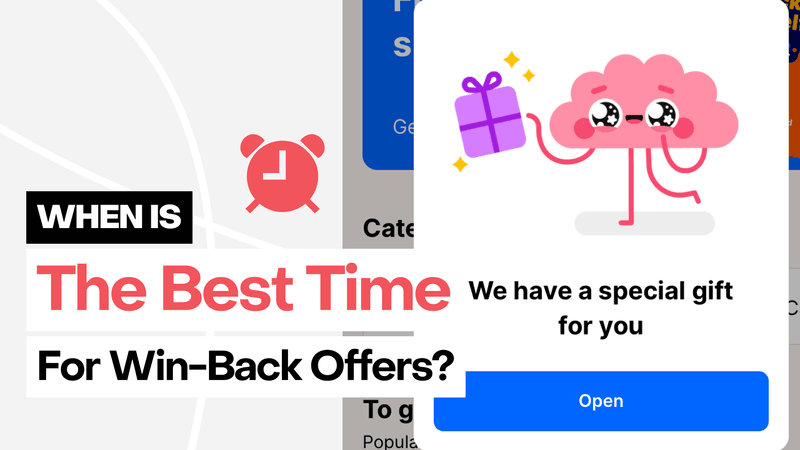Wygraj Oferty Specjalne: How to Win Back Customers with Special Offers
Did you know that businesses can boost their customer retention rates by up to 25% simply by sending special offers at the right time? The effectiveness of win-back offers can’t be overstated, especially in today’s highly competitive market. This article will explore how to craft compelling win-back offers, the best times to send them, and the psychological principles behind why they work. Let’s dive into the strategies for winning back your customers and making the most of your promotional efforts.
Understanding Win-Back Offers
Win-back offers are enticing promotions designed to entice former customers to return to a brand. These offers can take various forms, including discounts, free trials, or special bundles. Understanding the nature of these offers will help businesses frame their messages more effectively.
What Makes a Win-Back Offer Effective?
- Personalization: Tailoring offers to customer preferences enhances engagement.
- Timing: Sending offers at strategic times increases the likelihood of customer response.
- Clear Value Proposition: Clearly communicating what customers stand to gain is crucial.
Types of Win-Back Offers
There are several types of win-back offers businesses can use. Here’s a brief overview:
- Discounted Prices: Offering a percentage off the next purchase can entice customers to return.
- Free Shipping: This is particularly effective for online retailers.
- Exclusive Access: Allowing former customers access to special deals not offered to the general public can create a sense of exclusivity.
The Best Times to Send Win-Back Offers
Timing can be everything when it comes to sending win-back offers. The optimal times often depend on specific customer behaviors and seasons.
Identifying the Right Moments
Some strategies for identifying the best time to send win-back offers include:
- Duration Since Last Purchase: Monitoring the time since a customer last engaged can provide insights into when to send offers. For instance, sending an offer after 30-60 days of inactivity can rekindle interest.
- Seasonal Trends: Tailoring offers to coincide with holidays or shopping seasons can effectively capture attention.
- Customer Behavior: Observing customer behaviors and adapting accordingly can yield positive results.

Psychological Principles Behind Win-Back Offers
Understanding the psychological triggers that drive customers to respond to win-back offers is vital in crafting effective messages.
The Scarcity Principle
Creating a sense of urgency can prompt quicker action. This might involve limiting the time that an offer is available or the number of times a promotion can be claimed.
The Reciprocity Principle
When a business gives something valuable, customers often feel compelled to reciprocate. Offering a meaningful discount or freebie can lead customers to make a purchase.
The Commitment Principle
When customers have previously engaged with a business, they are more likely to return if they feel a sense of loyalty or commitment. Reminding them of their past experiences can reignite that connection.
Practical Examples of Successful Win-Back Campaigns
Here we’ll highlight a few businesses that have successfully utilized win-back offers.
Case Study: Retail Brand
A well-known retail clothing brand utilized targeted emails to reach customers who hadn’t shopped in over three months. Their offer included a 30% discount on the next purchase, alongside a personalized message reflecting the customer’s past buys. This approach led to a 15% increase in conversion rates.
Case Study: Subscription Service
A subscription box service implemented a win-back campaign targeting customers who had cancelled their subscription. Offering a “first month free” promotion not only brought many back but increased overall engagement, leading to several referrals.
How to Craft Your Own Win-Back Offers
Now that we’ve established what wins customers back, it’s time to discuss how to create compelling offers.
Segmentation and Personalization
Begin by segmenting your audience. Different types of past customers may respond to different types of offers. For example, a heavy user might respond better to a higher discount, while a casual buyer may appreciate free shipping.
Testing and Optimization
Conduct A/B testing on various components of your offers, including messaging, visuals, and timing. Analyze the results regularly to refine your strategy.
Conclusion: Make Every Offer Count
In summary, win-back offers are a powerful tool for revitalizing relationships with past customers. By understanding the intricacies of these offers, from effective types to optimal timing, businesses can increase their chances of re-engaging former customers. The key lies in personalization, testing, and leveraging psychological principles to create compelling win-back strategies.
To find additional insights on enhancing your marketing strategies, check out these articles: The Ultimate Guide to Customer Retention and Boosting Sales with Targeted Promotions.
Remember, a well-crafted win-back offer can significantly impact your bottom line, leading to increased customer loyalty and sustained revenue growth. Start implementing these strategies today, and watch your customer base grow!
